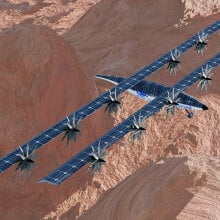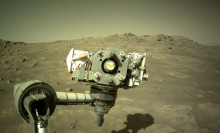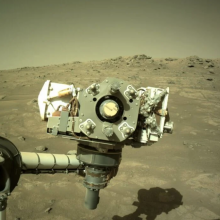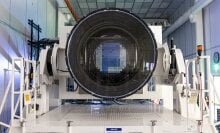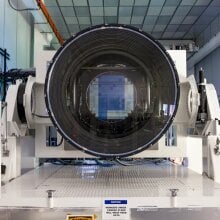After taking 72 flights into the Martian sky, NASA's Mars helicopter won't fly again. The craft's own images show why.
Ingenuity — the first craft to ever make a powered, controlled flight on another planet — recently suffered significant damage to some of its four-foot-long rotors, which are essential for lifting the helicopter into the air. The pictures below, taken by a navigation camera affixed to Ingenuity's toaster-sized fuselage, show several broken tips. The sun cast the broken rotors' shadows onto the desert surface.
These rotors can't fly damaged. Compared to Earth, the Martian atmosphere is quite thin. Its density is about one percent of Earth's, making it difficult to generate the lift needed for flight. To take to the air, Ingenuity spun its rotor blades at a blazing 2,400 revolutions every minute. It flew distances as far as 2,315 feet.
But as you can see, controlled flight isn't possible anymore.


The NASA craft didn't simply prove that flight on Mars was possible. It showed the future of planetary exploration. The extraterrestrial chopper served as a "scout" for the space agency's Perseverance rover, as the two Martian robots sleuthed for places that might have preserved signs of past primitive life on the dry desert surface. This could mean telltale pieces of genetic material, or parts of a degraded cell.
No evidence of life has been found — but the robots did identify places where primitive life could have once thrived, like in moist sediments along lakeshores and Martian rivers.
Tweet may have been deleted
Tweet may have been deleted
Future Martian exploration might not just involve robotic helicopters. NASA is investigating the potential for a compact Mars plane, a craft that might one day swoop at some 135 mph over the Martian desert. If it does, such a mission would have Ingenuity to thank.
"That remarkable helicopter flew higher and farther than we ever imagined and helped NASA do what we do best — make the impossible, possible," NASA administrator Bill Nelson said last week.
Topics NASA







